Genre: Action Developer: Sega AM2 Publisher: Sega Players: 1 Released: 2000
The original Shenmue was released exclusively for the Sega Dreamcast; at the very end of 1999 in Japan, and near the very end of 2000 in the West. Much has been written on the significance of the game’s ambitions, the prevailing view being that there was nothing else like it at release and for at least a year afterwards. The more pedantic among us will be quick to point out that Shenmue was not the first 3D open-world game to market – the Nintendo 64’s Body Harvest beat it by over two years, in Western territories – but this overlooks the specific nature of the world that Shenmue tries to create. Games now synonymous with the genre give you a sprawling playground modeled after any number of iconic cities, usually American; Shenmue gives you a concentrated slice of suburban Japan and does everything in its power to make you feel like you’re really there.
Shenmue opens with a murder. The victim is Iwao Hazuki, father of Ryo Hazuki, who is the sole player character. This significant plot point plays out within minutes of starting a new game, a bold storytelling decision that certainly generates immediacy, even if dramatic tension suffers. More interesting than what happens is how it happens. There is no Full Motion Video in Shenmue; everything is rendered in real-time. Seeing Ryo run up the hill to his family home, seeing his father fall at the hands of the sinister Lan Di is still a revelation, even today. It’s hard, in these opening moments, to truly care about the outcome of this confrontation: we don’t know the characters; we don’t know the stakes, but it’s equally hard to look away, by virtue of sharp texture work, superb animation, and surprisingly stylish direction.
Chasing Lan Di is the focus of everything you do in Shenmue, and here is the first and only spoiler of this review: you never see him for the rest of the game. Like the opening itself, this is an intriguing decision that builds Lan Di up to be not just elusive, but almost otherworldly. But like the opening, it’s easy to feel that the game doesn’t know quite how to capitalise on its own approach, how to maximise its own effect. On the one hand is the legitimate suspicion that Shenmue looks for the theatricality of its narrative without the sophistication to back it up. On the other hand, there’s legitimate danger in trying to apply Western ideals of storytelling to an artefact so thoroughly Japanese.
Unlike other examples of Sega’s IP, Shenmue is very much its own thing. Set not only in Japan, but Japan in 1986, it owes more to Chinese cinema than any video game before it. To Western audiences at the time of release – and, I suspect, in the present day – this is instantly advantageous purely because of how refreshing it is: how foreign, and yet how grounded. Compared to the works of designers like Suda51 and series like Metal Gear, it’s surprisingly tame. In designing the locations and mechanics of Shenmue, director Yu Suzuki seems far less interested in expressing any personal eccentricities than simply crafting the game world.
It’s a wonderful game world, and like most game worlds, it’s best experienced the first time around. Gameplay begins in Ryo’s bedroom, where he can open drawers, take out objects and examine them. There are plenty of nods to Sega’s storied heritage: “Master System” stationary on the desk, a Sega Saturn under the television in the living room (modelled after its Japanese design and actually able to play two games). This isn’t just for the Sega fan in us all: it’s part of the world-building, on a micro level. There are no recreations of famous monuments in Shenmue, no iconic skylines or landmarks immediately identifiable as Japanese to Western audiences. Shenmue looks closer and invites you to do the same. Once you’ve examined a few objects scattered around home, the long animations will probably put you off examining any more – but knowing that you can, knowing that they’re there, goes a long way in sustaining the illusion.
From Ryo’s house, players can venture outside to the garden; begin the descent to a sleepy residential district; and finally, visit Dobuita Street, patterned after the Japanese location of the same name. I don’t know how accurate Shenmue’s Dobuita is to the real thing, but I don’t think it matters: Shenmue’s Dobuita conveys an astonishing sense of place. Exploring the streets for the first time is incredible, and what’s wonderful is that it doesn’t matter if you’re moving fast or going slow: the atmosphere will wash off on you regardless. I first played Shenmue several years after its original release, and even then – even now – it stands apart from so many other open-world games, which give you a large city with nothing to see, nothing to do.
In Dobuita, Ryo can enter stores, talk to any non-player character, play full arcade and Quick-Time Event (QTE games), and collect little capsule toys, most based on existing Sega IP. All of this unfolds alongside a day/night cycle, with every area of the game transforming appropriately and beautifully as time passes. A simplistic weather system is also in place, resulting in rain and snow at random intervals. Some of these components are more sophisticated than others, but they all work towards the same thing: creating an authentic and lived-in world. The only threat to this ambition is the pop-in of character models when running through town, and the much-maligned English voiceovers which, although stunted in delivery, never invite the same derision as, say, a “Jill sandwich.” The combined elements of this life simulation are a triumph, standing tall as the signature aspect of the Shenmue experience.
Ryo’s interactions with this world form the backdrop of core gameplay. Shenmue’s overarching structure can be summarised – perhaps brutally, perhaps fairly – as a very long fetch quest. It’s not usually items that Ryo seeks, however, but people. Lan Di, the man who murdered Ryo’s father, left the scene of the crime in a black car, so one of Ryo’s first objectives is to find that car. The lady who runs a store at the village intersection didn’t see it – but she knows someone who claims he was almost run over by it. Ryo finds that person, who points him towards Dobuita, the direction the car was travelling, and so on. I don’t know how enticing or unappealing I’ve made that sound, but for the first hour or two, it’s hard not to be sucked in, if only because it’s so different from anything else out there.
The flow never really changes, though. Over the twelve or so hours you’ll spend with Shenmue, gameplay consists mostly of Ryo searching for people, finding them and searching for more people. There’s a long gap between Dobuita and the game’s final area, Yokosuka Harbour, which itself involves a great deal of investigation. This is, I’m sure, what repelled some gamers in 2000, and what continues to repel gamers today; but your success or failure with Shenmue depends less on how patient you are, how willing to tolerate its glacial pace, than on how invested you allow yourself to become, how absorbed in its world.
Walk, don’t run. Look around a little. Try to win NiGHTS from the capsule machine outside the village store. Go inside and buy something for the cat to eat. Match the latest clue in your journal to the townsperson most likely to help and pay them a visit. Play a cassette tape on the stereo by Tom’s hotdog stand. Head home, get some sleep and collect your daily allowance the next day, so you can waste it all again in the arcade playing Space Harrier. When you weave actual story progression with any or all of these auxiliary systems, Shenmue loses much of its slowness. Time seems to accelerate almost too quickly, in fact, as evening descends faster than you can complete everything you set out to do that day. Shenmue doesn’t demand the pixel-perfect precision of hazardous platformers, the compulsive grind of dungeon crawlers or the hair-trigger reflexes of online shooters: it asks only that the player doesn’t treat immediate objectives like a checklist.
The argument is often made that time has dulled Shenmue’s edge; I’d argue that time has made it sharper. While the volume of content compares unfavourably to more recent open-world titles, its mood and rhythm remain utterly distinct. Sega’s own spiritual successor to Shenmue, the Yakuza series, offers increasingly more diverse distractions with each installment (complete with checklists), but at the expense of diminishing its own authenticity: of gamifying itself. There’s nothing inherently wrong with this: it’s just the opposite of the uncompromising realism Shenmue attempts to achieve. More than this, the Yakuza series, like its Western counterpart Grand Theft Auto, exists exclusively within a universe defined by extreme violence, gang warfare and urban decay – all cornerstones of its enduring popularity. Shenmue, too, strives for mainstream appeal but without turning around to give the player a machine gun and a target. It’s astonishing how little combat there actually is, and admirable, even if the combat that does exist stands out for the wrong reasons.
Shenmue’s majestic Wuxia ambitions are highlighted via QTE – Quick-Time Events – in surprisingly well-choreographed sequences. The biggest drawback to these razor-sharp moments is how blatantly they underline the shortcomings of the actual, real-time fighting. Presumably based on Yu Suzuki’s own Virtua Fighter but turned into a clunky mess with 3D movement, these segments are mercifully infrequent and generally very easy. The sheer range of moves available and the areas available to practice them suggests a technical depth that can turn ugly button-mashing into a ballet of perfectly-timed combos, but I’ve played Shenmue at least twice and have never felt obliged to investigate further. There’s not enough fighting in the game, or enough imposing enemies, to justify training – reasoning which, in a rare moment of player/character harmony, feels perfectly compatible with Ryo’s own headstrong way of thinking.
The weakest link of the Shenmue package isn’t the real-time combat. The weakest link goes back to that initial suspicion: that while the scope of Shenmue is grand, it lacks the narrative sophistication to back it up. The atmosphere is palpable, the gameplay systems transformative; but while it’s easy to inhabit the world of Shenmue, it’s much harder to inhabit the shoes of Ryo. There’s a near-constant disconnect between his single-minded revenge quest and the player’s exploratory curiosity; between the blunt remarks he makes to other characters and what we ourselves might like to say to them; between the various emotions each plot beat wants us to feel, and what we actually feel. Shenmue has many reasons to stay with the player, but the narrative is unlikely to be one of them. It’s fortunate that the enigma of Lan Di – who he is and what he wants – is a hook that somehow persists even when the credits roll, to a breathtaking rendition of the main theme.
Almost twenty years after the original release of Shenmue, Rockstar Games launched Red Dead Redemption 2, a vast open-world game which, in its pursuit of an immaculately presented America, tasks the player with long horseback rides through empty stretches of land, elaborate animations that sacrifice speed for realism, severely restricted fast-travel options and, over its colossal running time, not a lot of action. It sold tens of millions and, like Shenmue at the time, achieved almost unanimous critical acclaim. There is no doubt in my mind that this Old West epic will be viewed very differently in twenty years’ time, with many future audiences deeming it unplayable. So it goes with Shenmue, which has always been brilliant. Its popularity ebbs and flows, but like the phoenix in the mirror, its soaring heights have already been engraved.
Score: 9 out of 10

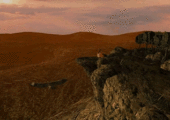
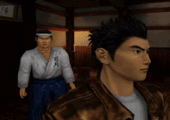
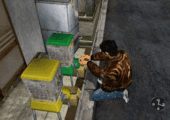
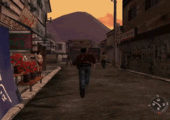
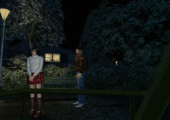
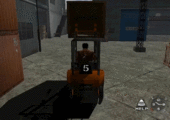
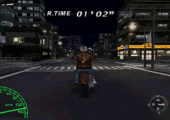
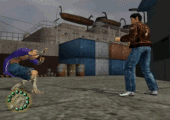
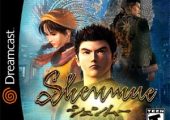
Recent Comments